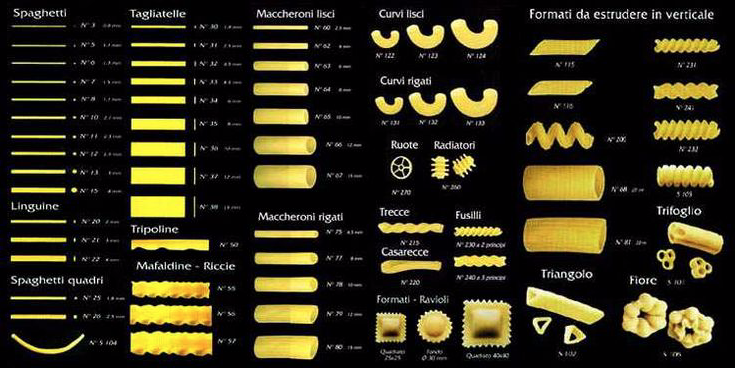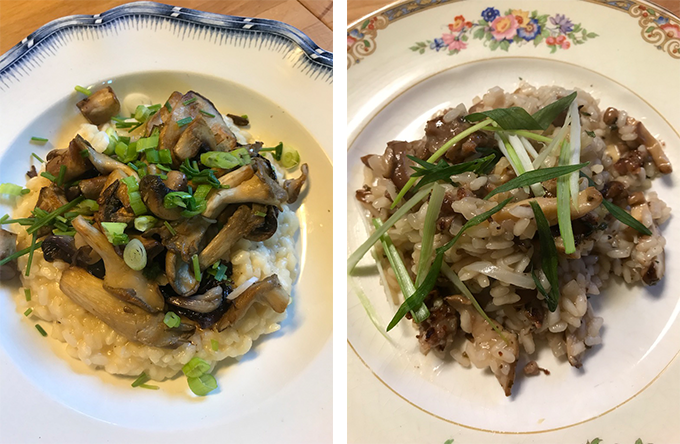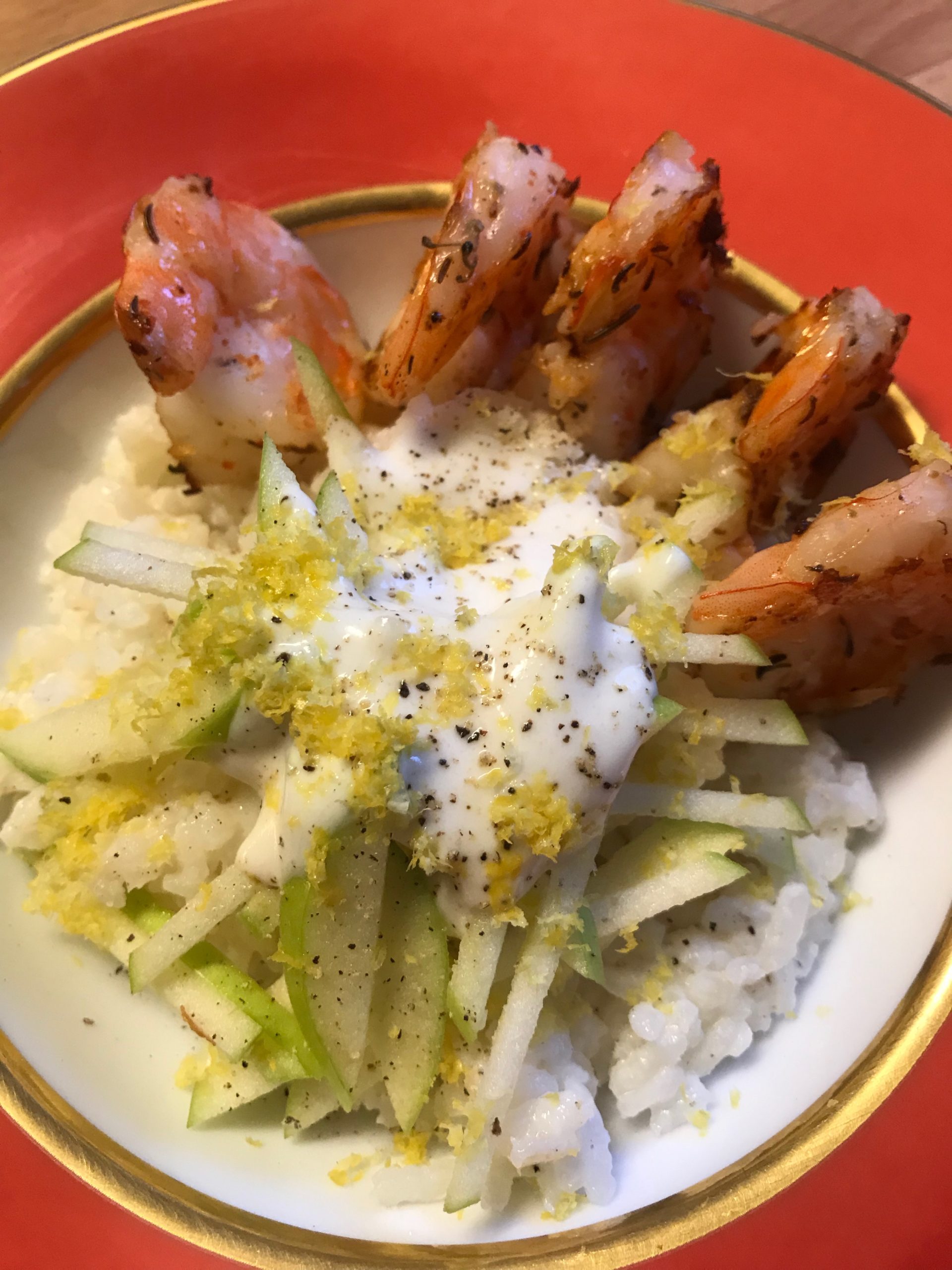
Risotto with grilled shrimp and marzipan emulsion. There are few days that I don’t cook an Italian dish; in particular, a risotto or pasta. For the latter, choosing from my local store’s selection of noodles when I know there are 350 types of pasta available worldwide, seriously dwarfs my culinary aspirations and creativity.
I love to experiment, especially with pastas that come with such melodious suffixes: bigoli, bucati, cabatappi, capellini, conchiglie, ferrazuoli, fileja, garnanelli, gnocchi, lasagna, lasagnette, penne, orecchiette, spaghettoni, strozzapreti, stringozzi, vermicelli, and the famous, yet generic, fettucine, spaghetti, and tagliatelle.


The pasta shapes and sizes, whether solid, hollow or filled, may be made from fresh or dry doughs, and are produced in these numerous varieties. This generosity of selection has developed over centuries through trial and error by family matriarchs for an important purpose: to showcase particular regional sauces — regional, meaning direct from their kitchens! There is also a cultural endeavor to this tradition, thus the creation of an academia established by the famous Italian Barilla company, to honor, safeguard and “strengthen the awareness of the deep roots of the Italian gastronomic tradition” (with, of course, the assumption that pasta is a well-established staple that belongs to the Italian identity prior to the Chinese).
Despite the numerous varieties, pasta remains a simple meal and rarely have I encountered a recipe that calls for a particular way of cooking the actual pasta – beyond boiling the noodles in salted water and removing them when al dente. This simplicity of preparation is at odds with the preparation of my other favorite Italian dish, risotto. This dish is made using a particular rice called Arborio and demands constant stirring when cooking. But, let’s be honest, while risotto is slightly trickier than pasta in its execution, it is not rocket science.
How to cook…
Typically, it is prepared in a warm broth, either chicken, vegetable or tomato, after shallots are cooked in butter to the point of translucency and, together with the rice, quickly sautéed before the addition of small amounts of white wine or vermouth, which are absorbed by the grain, all prior to the slow addition of broth. I favor the traditional Milanese style in which saffron is added to the broth, or, if you want to avoid using the world’s most expensive spice, add, instead, grapefruit juice to the broth followed by grapefruit slices as a final touch.
Both types result in an unctuous texture and can be served alone or with other main dishes.I’ve made many different risottos, incorporating a variety of ingredients and accompanying sauces: caramelized red onions, leeks, peas, cauliflower, asparagus, mushrooms, tomatoes, basil or parsley pesto, and a variety of subtle or robust cheeses. This was before I saw a chef on a French TV show prepare a risotto that was cooked in a new manner and sauced with an emulsion topped by sliced apples in the form of matchsticks.
Yes, I said emulsion, and the unusual ingredient beyond cream and warm milk was marzipan paste with a little pectin to thicken the liquid. Marzipan has been used since the early 16th century as a key ingredient on most continents and is eaten all year round. But ever since living as a young boy in Vienna, Austria, where marzipan is part of the seasonal baked goods offered at Christmas, I have a sweet tooth for this confection.

Fascinated with the idea of adding a balance of sweetness and tartness to the traditional earthy flavor of risotto, I set myself up to recreate the dish. Rewinding the TV sequence again and again, I was eventually able to get a sense of the required quantities for each ingredient. While the French invented the encyclopedia and tend to classify, order and systematize all knowledge, here, contrary to helpful American pragmatism, the chef did not give any measured quantities. After some experiments, especially calibrating the quantity of marzipan (as I did not want its pronounced sweetness to overwhelm the subtlety of the other ingredients), I got the dish right, or may I say to my taste.
The chef mentioned that the ease of the dish was that it did not rely on cooking the Arborio rice like a typical risotto, which requires constant stirring; instead, he simply set the Arborio grains in water and cooked until al dente. I prepared the dish accordingly and, while it eliminates a little labor, felt that the rice was soggy and without much flavor. In a subsequent iteration, I cooked the rice in the traditional risotto fashion, using a very lightly seasoned vegetable broth and favor this method as it has the je ne sais quoi that makes risotto a succulent dish.
To add to the dish, I grilled shrimp in a little olive oil and butter, added some fresh thyme and the rest is history. This dish entered the pantheon of my favorite risotto dishes. Voilà and Bon Appetit!
Would you like to replicate this dish at home? It’s simple and does not need much skill: Risotto with grilled shrimp and marzipan emulsion
For additional rice dishes, visit Rice
